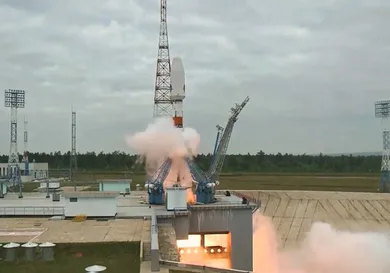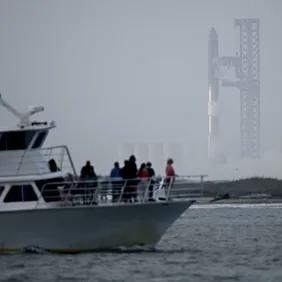Luna-25, Russia's latest space-faring project, has crashed into the surface of the moon after entering an "uncontrolled orbit." Roscosmos, Russia's space agency, had been hoping to make the first-ever landing on the moon's south pole. Scientists believe that important reserves of frozen water and precious elements could be located there. However, that effort has come to an end. “The apparatus moved into an unpredictable orbit and ceased to exist as a result of a collision with the surface of the moon,” the agency said in a statement.
The race to the lunar south pole had been between Luna-25 and Chandrayaan-3, launched by the Indian Space Research Organization. The ISRO had previously attempted to reach the lunar south pole in 2019 before crashing into the surface of the moon. Roscosmos said it wanted to show Russia “is a state capable of delivering a payload to the moon,” and “ensure Russia’s guaranteed access to the moon’s surface.” Sanctions coming as a result of Russia's invasion of Ukraine have heavily affected Roscosmos. Embargos and other sanctions have prevented the agency's ability to access Western technology.
Luna-25 Follows SpaceX In Space Failure
Luna-25's failure is a major setback for Vladimir Putin. Russia's space program is a pet project for the Russian leader as he seeks to once again make Russia a space superpower. However, it also marks the second high-profile space failure this year. In April, SpaceX faced a major embarrassment during the launch of their Starship heavy payload vehicle.
After adverse conditions scrapped the planned launch on April 17, April 20 was cleared as the new launch date. However, while the initial 7:28am EDT launch was successful, celebrations at Starbase were short-lived. A little over a minute into the flight, six of Starship’s engines had failed. Then Starship failed to separate, causing the trajectory to dramatically change and the vehicle to begin spinning. SpaceX executed Starship’s onboard flight termination just under four minutes after launch. For reference, the flight was meant to be last approximately 1 hour, 17 minutes. A SpaceX spokesperson jokingly referred to the event as “a rapid, unscheduled disassembly."
Read More: Massive fan brawl breaks out at 49ers game
[via]







